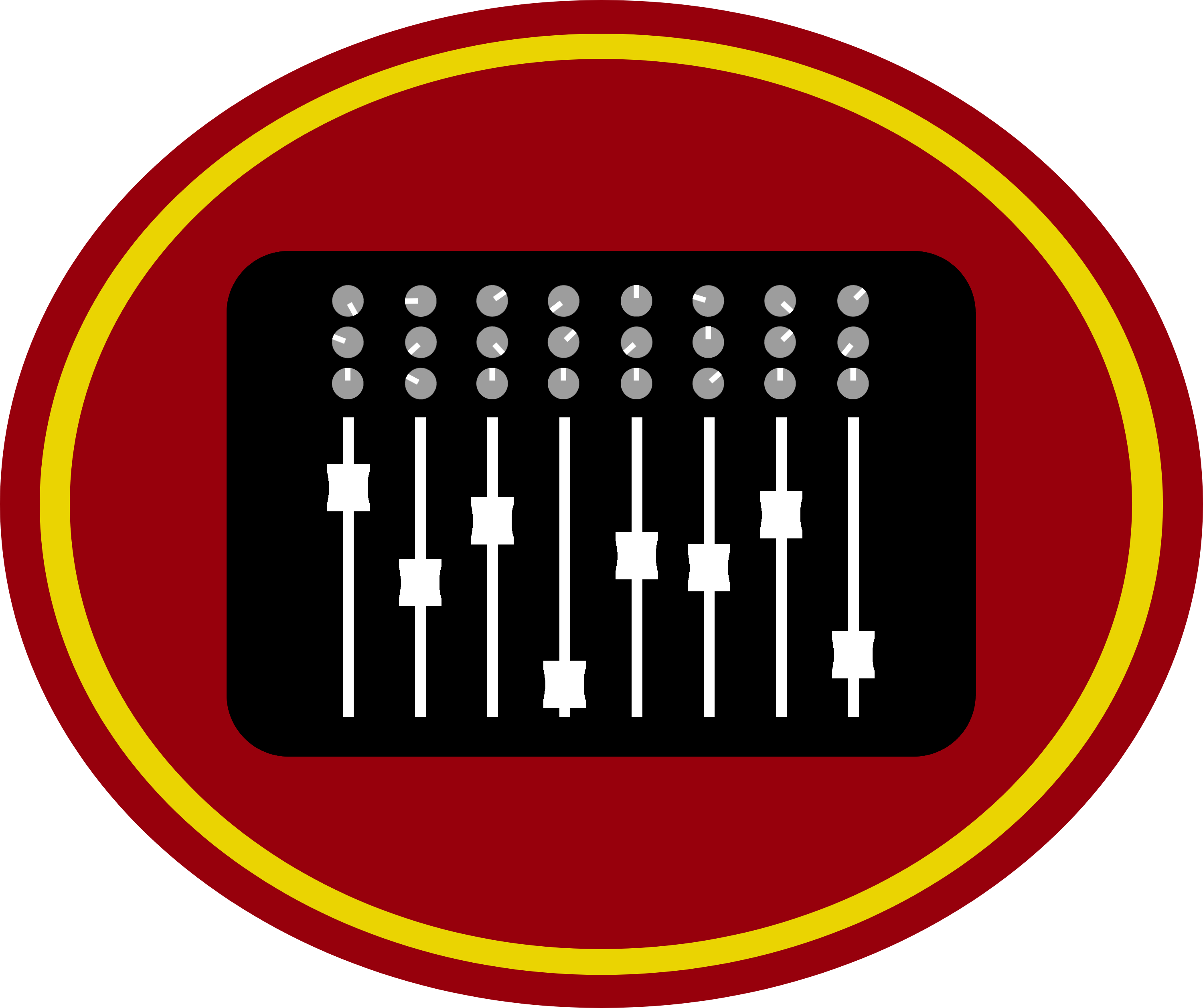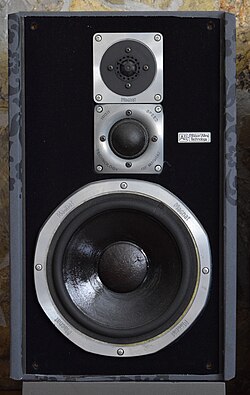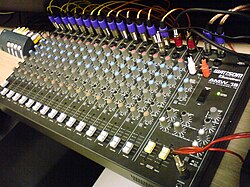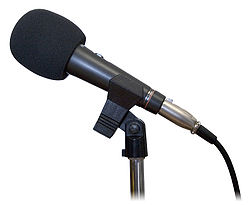AY Honor Audio Technician Answer Key
This honor is designed to be very practical in nature, utilizing hands-on experience. It is very important to have a basic audio system with which to provide this experience. It would be suggested that you work closely with your local church’s AV team and equipment to help in the teaching of this honor (they might even learn something new in the process). This would provide a system on which to complete the hands-on parts of this honor but more importantly, it would begin building a relationship between the AV team and the young people, which will hopefully lead to them being brought into the AV team to participate in their ministry.
1
1a
A device that converts an electrical signal into sound. There are several types of loudspeakers but the most common in AV systems are the paper cone loudspeaker and the acoustic horn loudspeaker.
1b
An apparatus that takes multiple audio signal inputs and combines them into one or two channels. In the mixing process, the signal amplitude and frequency response can be manipulated.
1c
A device which amplifies or multiplies the voltage/current of the audio signal so that it can drive the loudspeakers.
1d
1e
The resistance of a circuit to an alternating current (AC) or audio signal.
1f
The amount of amplification of an audio signal.
1g
A positive (adds gain) feedback loop that is caused when the input (microphone) to an audio system picks up the amplified sound from a loudspeaker, causing a continuous increase in volume, usually at a specific frequency.
1h
The dependence of the output of a device on the frequencies being input.
1i
A device that is used to alter the frequency response of an audio system.
1j
A three wire system that uses separate wires for the positive signal, the negative signal, and the ground. Balanced signals have advantages in being able to keep the noise levels low, even with relatively long cable runs.
1k
A two wire system in which there is a positive signal on one wire and the negative signal is combined with the ground. These have the advantages of simplicity but they tend to be noisier.
1l
Sound that involves only a single output/input channel that does not contain spatial audio image information.
1m
Sound that has two output/input channels and that contains spatial imaging information.
1n
The pick-up pattern of a microphone that when plotted in a polar diagram, looks like a heart.
1o
This pattern is similar to the cardioid pattern except that it appears somewhat elongated. This means that the microphone has more sensitivity in one direction.
1p
This term means that sound is predominantly picked-up from a single direction. Microphones utilizing this pattern can isolate a sound source in the presence of a number of other sound sources nearby.
1q
A test of the sound system done to ensure the desired sound from the performers in a program.
1r
A direct current (DC) voltage, most commonly 48 volts (can range from 10-48 volts) that is used to power microphones that contain active circuitry, such as condenser microphones.
1s
A unit of measure used to describe the intensity of a sound or the power level of an electrical signal by comparing it with a given level on a logarithmic scale. It is a way of measuring and describing loudness of sound.
2
Here are 4 of the more common microphones that will be encountered when using an AV system:
- Dynamic microphone: Dynamic microphones generate an electrical signal from sound by a thin membrane moving a coil within a magnet. A dynamic microphone works like a loudspeaker but only in reverse. Dynamic microphones tend to be rugged and relatively inexpensive and are most often used when the human voice needs to be amplified.
- Condenser microphones: These microphones work by the sound waves vibrating an electrically charged plate in the microphone capsule. The signal is generated by measuring the change in the capacitance of the capsule. These microphones tend to be very sensitive and are most often used where large ensembles of instruments of voices need to be captured.
- Wireless microphones: These can be either condenser or dynamic microphones with an attached radio transmitter. The receiver is usually located near the audio mixer and passes the signal to the mixer. The advantage of wireless microphones is that they require no cables. This is particularly useful if the person using the microphone is moving a lot on the stage.
- Lavalier microphone: This is a microphone with a very small capsule that can be worn over the ear or clipped to a jacket lapel or a shirt pocket. These microphones are used when the person speaking needs to keep his/her hands free, such as when reading from the Bible during a sermon or performing a demonstration on stage
3
3a
It is important to place the microphone directly in front of the person singing or speaking, about 12 inches from their lips. This is done in order to get a strong signal which in turn, will reduce the noise in the system that results from having to turn the gain on mixers too high. It is important to teach your singers and speakers good microphone handling techniques and makes the job of the audio technician producing good sound quality much easier.
3b
To avoid feedback, the microphones should be placed behind the plane of the loudspeakers used in the system. This may not always be possible so it is important the microphones be kept as far away from the speakers as possible and not be pointed directly at the loudspeakers.
4
It is important that the system meet the minimum requirements as outlined in #4 and that the system be available during the teaching of this honor.
4a
The steps involved in setting up a sound system are dependent on things such as is the system permanently installed (such as a church sound system) or is this a portable system in which everything will have to be set-up and wired. For a church sound system the set-up involves mainly setting up the microphones, making sure that the proper auxiliary sound sources are wired in and tested, and performing the sound check. For a portable system, one will need to add speaker set-up and wiring as well as provide line power for the mixer and amplifier.
4b
Taking down a sound system involves properly powering the system down, making sure the microphones are put away in their proper place and any batteries they may use are removed, and any cable used properly bundled and stored. For a portable system, one would have to add the storage of the speakers and the mixer and amplifiers.
4c
5
5a
There are typically at least three methods of controlling the volume of a sound system. The first is the input gain knob, the second is the input slider, and the third is the output slider (master volume). To set the gain and the input slider, one can use the concept of what is called unity gain. One way this can be accomplished is to set the master volume slider at the 0 db mark, set the input volume slider at 0 db and adjust the gain of the input until the output level meter reading averages 0 db. You do need to remember that the mixer will add the signals from the various inputs so that if you have a lot of signals, the input volumes will have to be reduced. The details on volume control will depend on how your particular system is set-up. It is also important to balance the volume between inputs. If a singer is singing to a CD track, the volumes need to be balanced between the two inputs to yield a natural sound with neither source overwhelming the other.
5b
If you have stereo outputs on your audio system, panning of the input source allows you to ensure that the sound of the person who is standing on the left side of the stage comes primarily out of the left side speaker.
5c
Equalization is the process that is used to shape the frequency response of the system. This is done in order to make the system sound as natural as possible and overcome some frequency response limitations of the room and audio systems. Mixers typically have at least three knobs that cover high, middle, and low frequencies. Once can either subtract or add gain for those specific frequencies. Some systems may have a separate equalizer, which is mainly used to compensate for any frequency anomalies due to the room itself.
5d
The dynamic range of an audio system describes the range of inputs from quiet input to very loud input. When setting a sound system, one typically likes to find a setting in the middle of the dynamic range of the input (could be a speaker, singer or other input). A sound check is very useful in understanding the dynamic range of the source and identifying the best level at which to set the system. Many modern mixers have built in signal compression and expansion, which can reduce the dynamic range electronically, which makes setting the proper volume easier.
6
6a
Prevention is the best cure for feedback. This translates into proper microphone placement and use by the speaker/singer. Feedback can occur at various frequencies and manifests as a screech, howl, or a loud hum. When feedback occurs, it can be controlled by adjusting the gain (volume) of the system but by identifying the frequency range of the feedback, it can also be controlled by subtracting gain in specific frequency ranges by using the equalizing knobs on the mixer. There are external devices that can be inserted into the signal path that can detect feedback and filter out the offending frequencies without any operator intervention. Many modern mixers also have this capability.
6b
Any wiring issues can be caught by performing a sound check prior to the program. That being said, things happen. By understanding the signal path and being able to identify which signal path or input is not responding will greatly aid in finding and solving this problem. Ensuring that your cables are in good condition and that any wireless microphones have good batteries will go a long way to avoiding this situation. Training the operators of the microphones is also helpful as many times they tend to turn off the microphone when they are finished with it. All control of microphones should stay with the AV staff.
6c
Any sound system that resides in a public-accessible area can suffer from this condition. A good solution is to have the sound system in an area in which entry is controlled however in many cases that is not practical or possible. The sound check prior to the program will catch many of the problems associated with people playing with the settings of the equipment. Another thing that may be helpful is to have a picture of your mixer, with it set at its typical program settings posted near your system. This will allow you to get the system to a good starting point without a lot of fiddling with the settings.
7
It is important that one work closely with an organization (church, school, etc) to get their help in having the Pathfinder fulfill this requirement. The most likely organization that can best deal with a group of Pathfinders taking this honor is a church, since there may be multiple opportunities per week in order to run their sound system.
8
- a. How did they get started in this field?
- b. How do they see this work as a ministry?
- c. What do they enjoy about what they do?
- d. What do they not enjoy about what they do?
- e. What are the aspects of the work they find challenging?
- f. What do they do to keep up with the technology in the field?
The purpose of this requirement is to get to know an audio technician and find out about what attracted them to this type of ministry and what some of the pluses and minus are to doing this sort of work. The goal is for the Pathfinder to obtain information which helps them decide if this type of ministry is for them.
9
So then faith comes by hearing, and hearing by the word of God.
A major point of all these verses is that hearing is part of the process in which information about God is conveyed to us. Hearing is what the major job of the audio technician is. Their role is to make sure that the “word” as presented through the spoken word or song is clearly heard by those present in the congregation.





